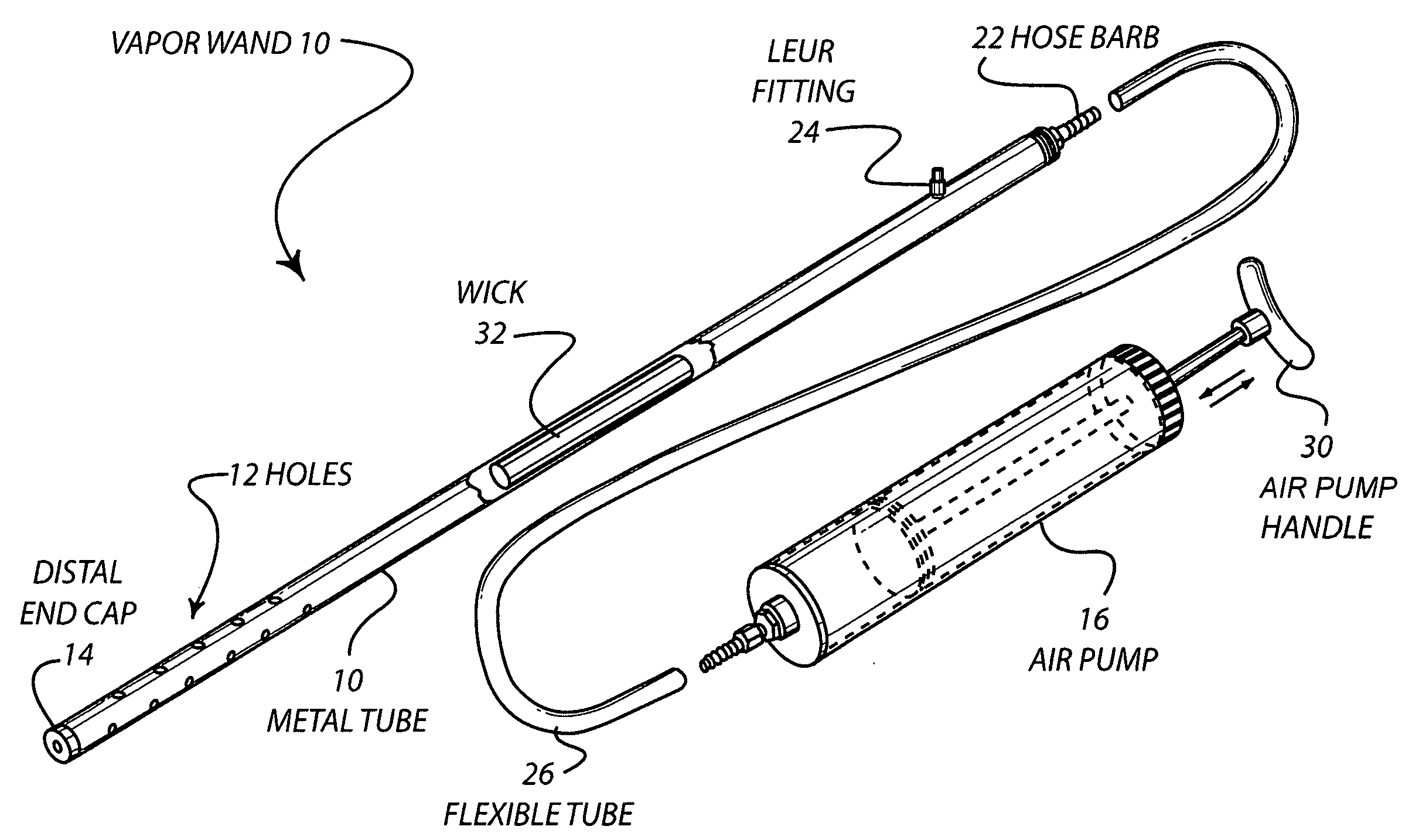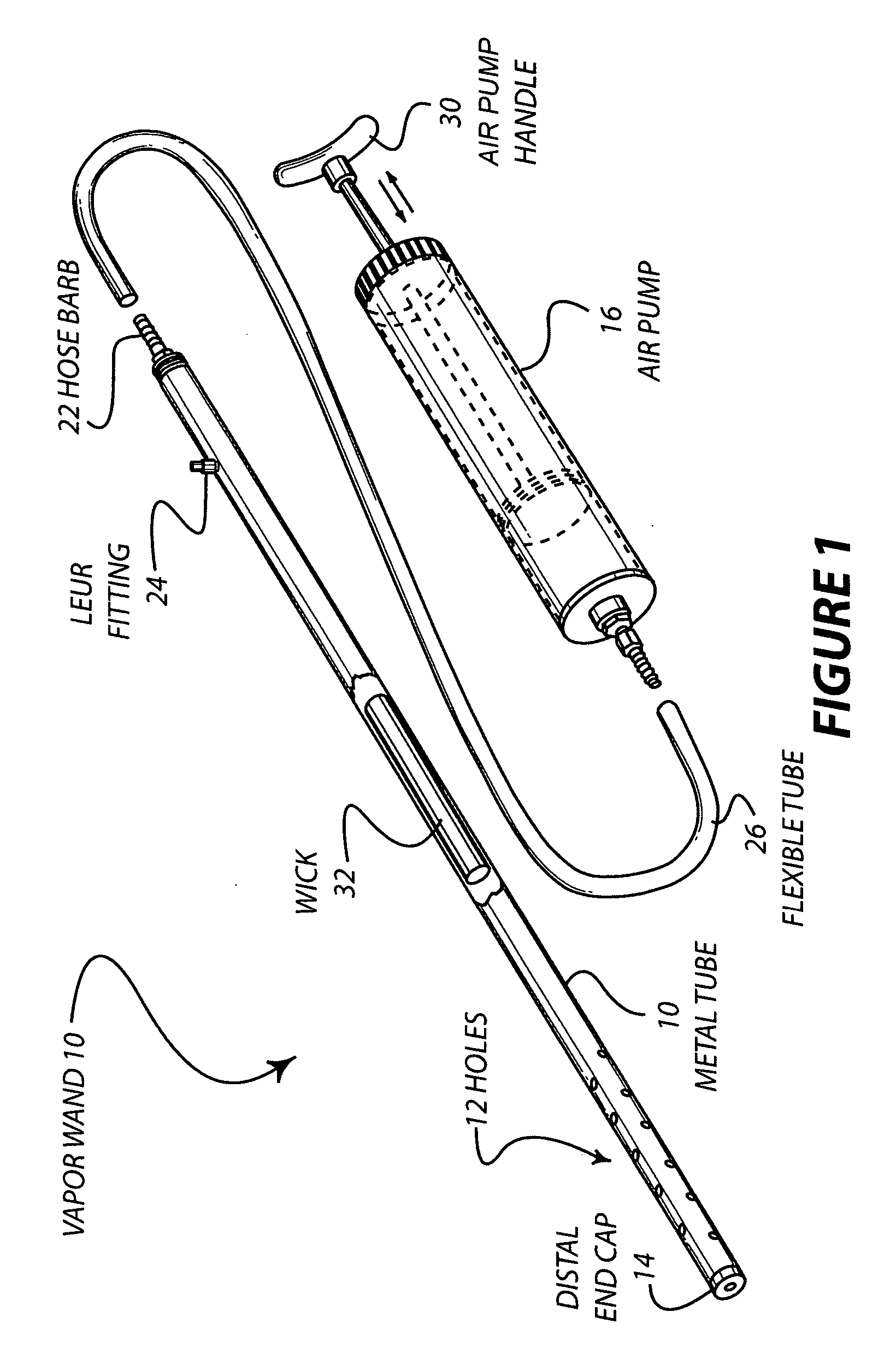Anesthetic delivery device
a technology of anesthesia and a delivery device, which is applied in the field of anesthesia delivery devices, can solve the problems of enhancing the likelihood of an abnormal response, safety problems, and unable to safely handle these animals without anesthesia, and achieves the effects of easy operation, wide applicability, and easy understanding and implementation
- Summary
- Abstract
- Description
- Claims
- Application Information
AI Technical Summary
Benefits of technology
Problems solved by technology
Method used
Image
Examples
example 1
[0029] This example pertains to a Ferel cat presented by a police department animal control officer. The cage containing the cat measured 12″×12″×21″ with a volume 3024 cubic inches. The target concentration of isoflurane vapor equaled five percent. The cage was placed inside a plastic bag and was then sealed around a small transparent window. The vapor wand was loaded with 12.4 ml isoflurane liquid and inserted through a small hole that was cut into the bag. The air pump was manually pumped to cycle cage gas back and forth through the vapor wand to enhance vaporization of the liquid anesthetic in the wick.
[0030] Results
[0031] Induction time to complete anesthesia was two minutes and three seconds. The induction was very smooth, with no adverse movements or responses.
example 2
[0032] A Mandrill (small baboon) was presented in a cage which measured 22″×32″×24″ with a volume of 16,896 cubic inches. The target concentration of isoflurane vapor equaled five percent. The cage was placed inside a plastic bag and was then sealed around a small transparent window. The vapor wand was loaded with 76 ml isoflurane liquid and inserted through a small hole that was cut into the bag. The air pump was manually pumped to cycle cage gas back and forth through the vapor wand to enhance vaporization of the liquid anesthetic in the wick.
[0033] Results
[0034] Induction time to complete immobility and a moderate plane of anesthesia was six minutes and eighteen seconds. The induction was very smooth. The animal was quiet with no struggling.
PUM
 Login to View More
Login to View More Abstract
Description
Claims
Application Information
 Login to View More
Login to View More - R&D
- Intellectual Property
- Life Sciences
- Materials
- Tech Scout
- Unparalleled Data Quality
- Higher Quality Content
- 60% Fewer Hallucinations
Browse by: Latest US Patents, China's latest patents, Technical Efficacy Thesaurus, Application Domain, Technology Topic, Popular Technical Reports.
© 2025 PatSnap. All rights reserved.Legal|Privacy policy|Modern Slavery Act Transparency Statement|Sitemap|About US| Contact US: help@patsnap.com



